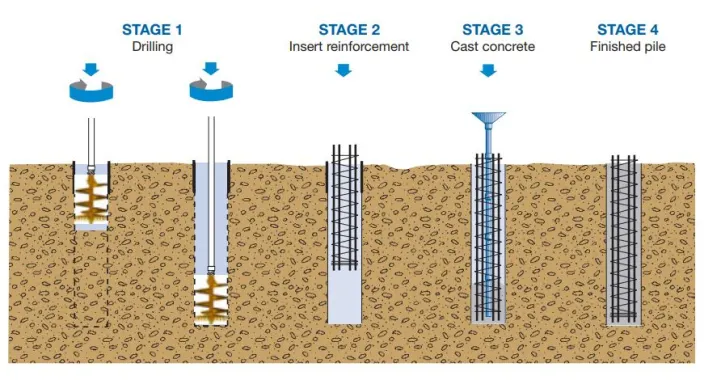Want to renovate your home or only your bedroom? There are many things that you need to consider but do not forget to check the guidelines about standard bedroom sizes so that your room looks even better than before. Keep on reading!
Do you wish to add more light or space to your bedroom? Do you recognize if the bed you’re using is the appropriate size for your room? Knowing how much capacity you have had to work with is vital because bedrooms come in various shapes and sizes.
Consider the bedroom’s dimensions if you’re dealing with the main house or a little closet sleeping nook. It’s the first step in converting your sleeping quarters into your ideal bedroom. For that, you need to know the standard bedroom sizes for the proper utilization of the space.
This article will help you in doing so. We will not only talk about the standard bedroom sizes but also the other aspects of it so that you don’t need to worry about a thing.
Also, check out the types of cement you should use while doing construction. Having knowledge about one-way or two-way slabs is essential too.
Standard Bedroom Sizes and Other Aspects
So, without further adieu, let’s check standard bedroom sizes according to sizes and uses. We will discuss the standard sizes of the master bedroom, master suite, second and third bedroom, etc. Don’t wander here and there, just keep on reading this guide.
1. Standard Bedroom Size

The dimension of the home will often affect the size of the bedrooms. The typical bedroom size in American dwellings below 2,500 square feet is 11 feet by 12 feet. There are numerous varieties, though.
Usually, the larger space is known as the master bedroom. Then, secondary rooms are used as guest rooms, additional offices, and bedrooms for children. Knowing the dimensions of bedrooms can help you make subsequent decorating decisions for your space.
Also Read: A Definitive Guide of Types of Walls Used in Construction
2. Size of Master Bedroom

A primary bedroom typically measures around 200 to 250 sq ft in size. They can accommodate larger mattresses, chests of cabinets, and other substantial furniture because they are typically 14 feet by 16 feet.
Master bedrooms are frequently incorporated into the structure and are typically positioned adjacent to a washroom than other guestrooms. They are regarded as a master suite in that instance.
3. Master Suite
Master suites are accompanied by their private bathroom and are considered the king of bedroom sizes. They occasionally also include a second seating area or a modest work area.
Master suites often range from 300-350 square feet and are either open-plan or have walls separating them to create a seamless flow between the spaces.
Also Read: A Guide to Different Types of Slabs
4. Second and Third Bedroom Size

Second & third bedrooms are usually smaller than master bedrooms or luxury suites and frequently serve as a child’s guest bedroom, bedroom, or home office. The dimension will vary depending on the dimensions of the house as a whole, but the typical smaller bedroom is nearly 132 sq ft.
Although they are rarely adjacent to bathrooms, these rooms are typically found close by. The additional bathroom in a house is commonly shared by bedrooms besides the master.
Design of Bedroom based on Bedroom Types in New Home
The furniture, decorations, and fixtures you want to put in your dream home must consider the sorts of bedrooms you have built. The living room, home office, kitchen, dining room, family room, and bedrooms are allotted space in a typical home (one or several).
If your home has enough square meters of floor space, you can anticipate typical rooms with a sizable amount of floor area. However, you must use your imagination if you live in a studio flat or a small house. On the positive side, smaller homes with constrained floor areas typically have tall ceilings, allowing you to design your home by taking advantage of the vertical space.
Smaller House Bedroom Designing Ideas
Consider using tall furniture rather than wide ones to provide the impression of a larger layout plan if you don’t have full-size rooms set aside for various uses. Always calculate the available space on the floor and make the most of every inch. For some innovative home design planning, you might consult our post on designing small dwellings.
Because walk-in closets and huge furniture pieces may need to be more practical, choose furniture with built-in cubbies and storage areas. Consider quintuple furniture or pieces that can be put on walls because your bedroom could be shorter than average or the room may serve as both a living area and a bedroom.

Standard Room Designing Ideas
These bedroom proportions are adaptable and work with a variety of design concepts. You can incorporate creative fixtures and furnishings, whether a children’s room, a spare bedroom, or a comprehensive bedroom for adults.
1. Guest Room Size

It’s okay for guest rooms to be large or have walk-in cabinets. However, it is courteous to provide them with an adjoining powder room to enhance their comfort. Queen-size beds can be installed here for families or simple single beds for families and colleagues who are single. You should consider installing a cabinet or solitary closet to maximize space, given the lower bedroom proportions.
Additionally, since this is where your nightly visitors will spend their time, consider the room’s design. Most of the time, since there isn’t much room, you can utilize creative interior decoration to put a focal point near the cabinet or among the side tables to draw attention away from how small the area is.
2. Kids’ Room

Simple and reasonably priced bedroom options are available if you only have one child. However, if you’ve got more than one child, you can construct a kids’ bedroom with a capacity for twin and quad beds. But bear in mind as they get older, they might need their bedrooms.
Now, let’s evaluate the bedroom’s size, which forms the foundation of our design ideas. Is there room for two twin beds? You might also put in a single bed that is a standard size.
If so, think about placing the beds near the walls and adding a wardrobe between beds or adjacent to the bed’s foot end. The space appears spacious enough for kids to walk around in this fashion. You can conserve some area in the small rooms and repurpose it for studying tables, bookshelves, a creative zone, etc., as a kid’s room doesn’t necessarily require an attached bathroom.
Consider bunk beds using the available vertical space if the bedroom is shorter than the average size. Regardless of whether there is adequate room for twin beds, some kids may prefer bunk beds, and some single kids may wish to feel less isolated. Given that kids will be using the place, consider your child’s suggestions.
3. Standard Room
A typical bedroom dimension is one that equitably meets all of the needs of the home. It might need to be more significant to accommodate a king-size bed or might already be inhabited if you choose to install one, but it does offer a lot of personalities.
Standard-sized beds fit in these rooms, with room for a wardrobe or constructed storage. Typically, you have enough room on the floor to add a compact vanity, nightstands, more storage, and an area rug.
You can be imaginative because these spaces are smaller than guestrooms but need practically identical amenities. Install bay windows for a reading nook or box skylights for plants. For a couple’s room, use bright colors, while for a room for elders, other relatives, teenagers, etc., use milder neutral hues like white or beige. This makes it possible to investigate cutting-edge design trends.
Also Read: A Guide to Different Types of Footings
A typical-sized bedroom does not require an adjoining bathroom, but if there is room, you might consider adding at least a tiny one. If your condominium or new home doesn’t have a main bedroom, one of the regular bedrooms can serve that purpose. Therefore, consider the open spaces and make the required alterations to distinguish one area from the others.
Master Bedroom Designing Hacks
A master bedroom frequently includes a master bathroom, or at the very least, a modest shower room with a shower stall, kitchenette, lavatory, and, if room allows, a tub. When planning the master bedroom for your lovely home from the ground up, consider placing it on a stronger foundation or in a space where you can include a bathroom.
The master bedroom is now unquestionably larger than your standard-sized guestrooms in terms of square space. Better form and utility are therefore required for the design and décor. This larger room may easily accommodate a California king bed, possibly with a contemporary headboard and wonderfully carved bedside tables.

Because the space is larger, you can use energizing color palettes. Red is a good option but uses it carefully because it makes people angry and dangerous. Additionally, you can use white, yellow, brown, and orange splashes. These colors lift your spirits whenever you wake up in the morning and at the conclusion of a long day.
A tiny sitting room adjacent to the windows in the master suite can serve as the remaining living space while you enjoy your cup of coffee or meal. It’s a charming little nook created for you and your spouse to unwind in each other’s company. If you’re single, this area is perfect for a peaceful reading nook or a spot to take in a sunset.
FAQS
-
How do I make my bedroom feel bigger?
It can be upsetting to discover that the bedroom will not feel any bigger after decluttering and moving things around. When you reach this turning point, your furnishings should be examined.
Bulky furniture will make a room feel smaller if it is crammed into a small space. The focus of modern designers is on clean, straightforward design. Even though you might adore your antique chest of drawers, it probably takes up valuable room. Instead, seek contemporary, straightforward furniture.
-
Will the paint color make my bedroom look bigger?
Depending on the brightness, paint color is a wonderful instrument that can make practically any area appear larger or smaller. Warm crimson bedding may seem opulent, but it will probably make your room appear shorter, darker, and smaller.
While paint cannot fix some things, using lighter neutral colors like white, light grey, and sandy tones can help reflect light. This light reflection will give the impression that the area is larger.
Conclusion
With all this, we came to an end discussing all about standard bedroom sizes and some of the best bedroom designing ideas.
Passion and imagination are needed to design and build a bedroom. The only place in your house where you can shut the door and then let your imagination take over is in this room. See if there is room to turn regular-sized bedrooms into a master if you rent or buy an apartment. If not, employ your imagination to create a more expansive, in addition to a very calming, design for the space. Consider the floor area when creating the interiors if, on the other hand, the property already contains a master suite, or your architect has created larger bedrooms in the new residence.
What do you think of our guide? Is it helpful for you to find out standard bedroom sizes? Do let us know in the comments section below!





